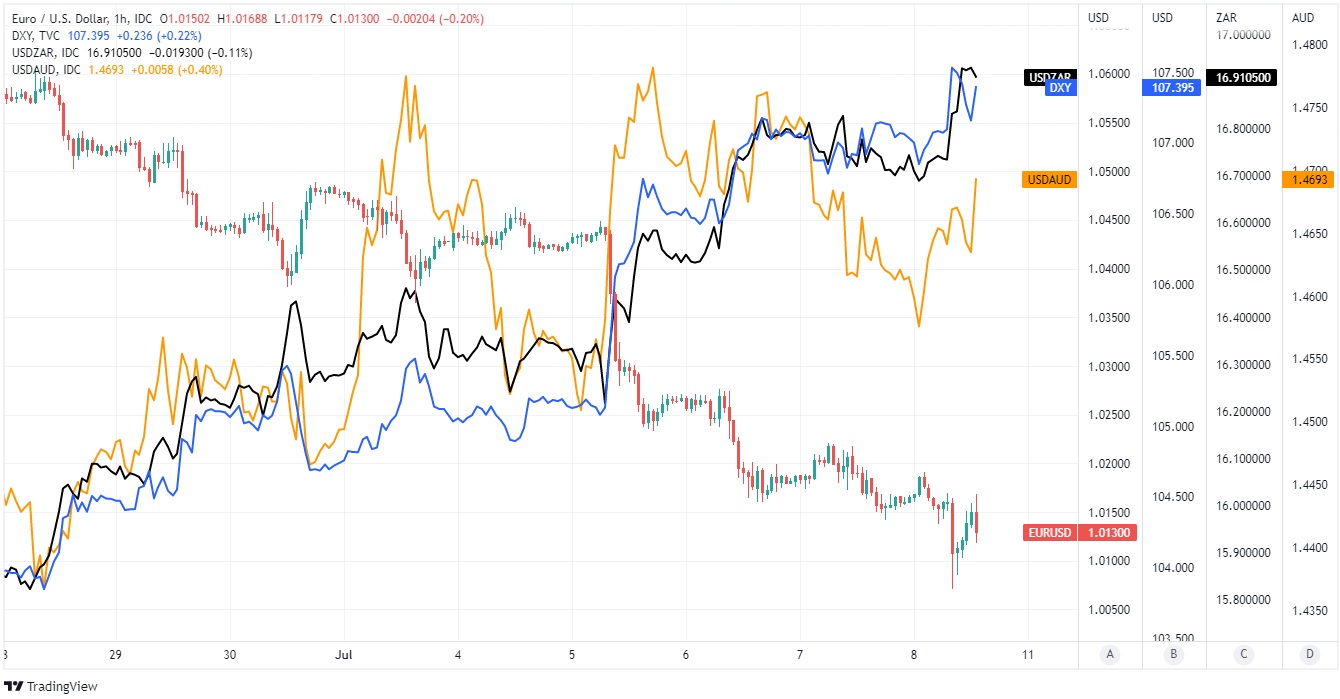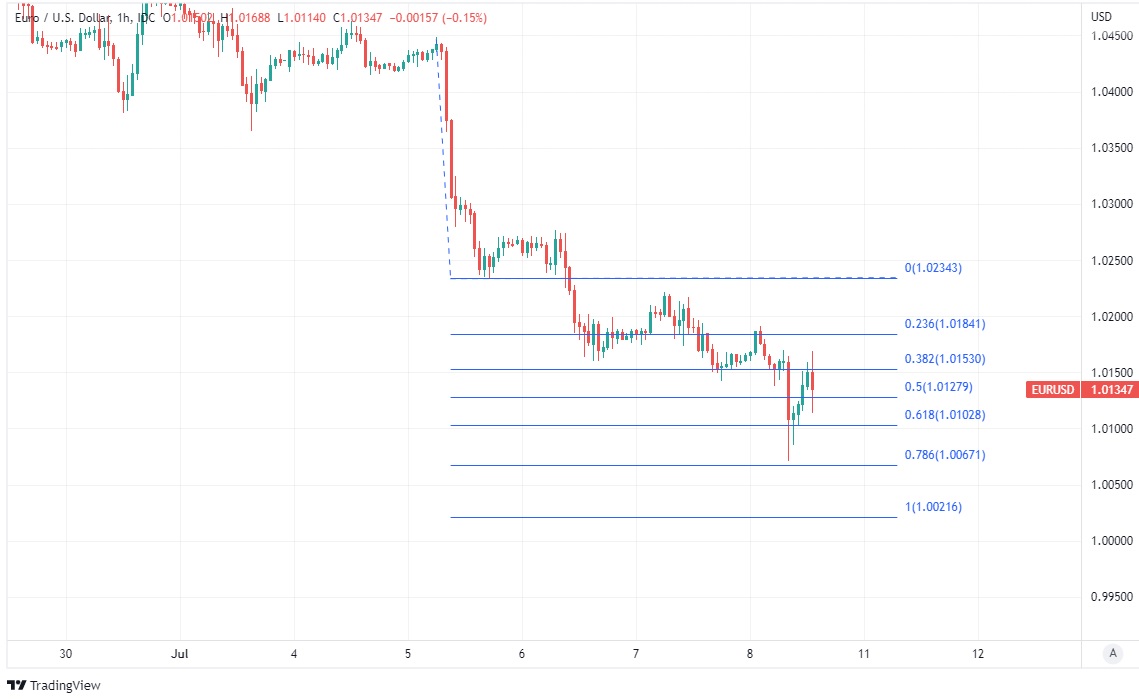 The Euro barely escaped the psychologically critical threshold of parity versus the Dollar in the closing session of last week, but was last seen trying to fight off an appreciating dollar after the US non-farm payrolls numbers were overwhelmingly positive for June.
The Euro barely escaped the psychologically critical threshold of parity versus the Dollar in the closing session of last week, but was last seen trying to fight off an appreciating dollar after the US non-farm payrolls numbers were overwhelmingly positive for June.
The unexpected rise in non-farm payrolls in the United States for the month of June was significantly higher than the approximately 260k increase that was specified by mechanisms of consensus between many economic experts. This was due to the fact that some 372k jobs have been either generated by the economy or plainly regained from the harm caused by prior efforts to contain the covid-19 infections.
In the meantime, the jobless rate remained unchanged in June at 3.6 percent, which maintained its proximity to the multi-decade low points that were prevalent just before to the epidemic.
The Bureau of Labor Statistics stated “In June, the jobless rate matched that of the previous three months, at 3.6%, and the count of people without jobs remained relatively the same at 5.9 million. These measurements are not significantly different from what they were in February 2020 (3.5% and 5.7 million, correspondingly), before the pandemic.”
The Bureau further stated “Since the beginning of the epidemic in February 2020, overall employment in non-farm sectors has decreased by 524,000 jobs (or 0.3%).”
The increase in average hourly wages was 0.3% in June and 5.1% on a y-o-y basis. This might be significant for the stance of the Federal Reserve (Fed), since it shows dips from 0.4 percent and 5.3 percent respectively. Wage growth in the United States has not kept up with the inflationary pressure, which according to one metrics was over 8 percent for May. However, wage increases has been running at greater than normal levels, and central banks would generally perceive this as a fuel for inflation and an invite to lift benchmark interest rates.
Katherine Judge, an economist at CIBC Capital Markets, said “The yearly growth was revised up to be higher than expected and came in at 5.1 percent after the preceding month’s numbers were revised higher. In general, the ongoing robust hiring that was shown in the payrolls report lends credence to the idea that the Fed would likely raise interest rates by 75 basis points by the end of July.”
Despite the fact that the market has by and large effectively priced in the danger of the Fed Funds rate increasing by another 0.75 percentage point increments, to 2.5 percent, and that did not prevent the Dollar from climbing, nor did it prevent the Euro from dropping, in the aftermath of Friday’s news. The reaction of the dollar to the data released on Friday suggests one potential reading of the data, which is that the employment market after the pandemic is in excellent condition, which most certainly contributes to the ongoing upside risks to the forecast for interest rates set by the Federal Reserve.

This comes as a result of the minutes from the monetary policy session held in June, which expressly “acknowledged the prospect that further stringent posture may be necessary if rising inflation trends were to remain.”
Within the Federal Open Market Committee in June, there was widespread backing for raising the US interest rates to a “minimally constrictive” level of anywhere between 3% to 3.5% by the end of 2022. However, Fed officials had already made it apparent that they would be willing to go much further than all of this.

Wednesday’s FOMC minutes revealed “As of right now, members have remarked that shifting to a more stringent position on the issue of policy is needed in order to fulfill the Committee’s legislative mandate to increase the scope of employment and price stability. This is due to the fact that inflationary pressure has remained far above goal set by the Committee. A posture like this would also be suitable from the point of view of risk management since it would leave the Committee in a good state to execute more tight policies in the event that inflation turned out to be greater than predicted.”
Any additional upward adjustment by the market to estimates for the US interest rates might do nothing more than accentuate recent analysts and economist fears about the likelihood of an economic downturn in both the United States and the world economy, a danger that many have lately characterized as being on increase. This may not be good news for the Euro to Dollar exchange rate, which recently saw a sharp decline and was last seen fighting close to the parity sign on Friday.




